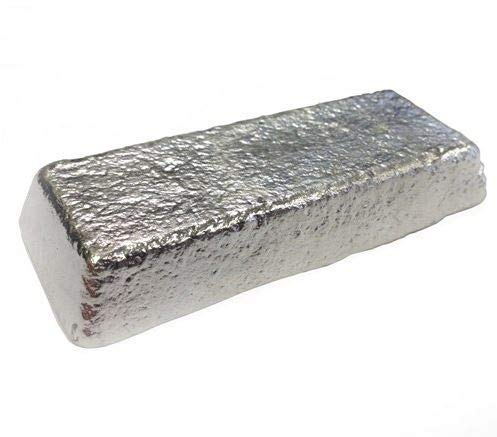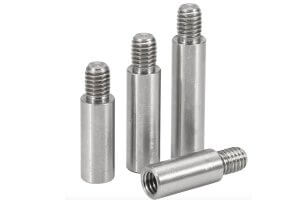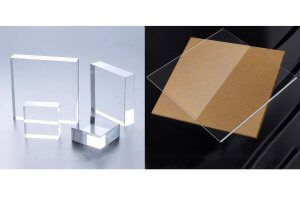Introduction to Pewter
Pewter is a malleable metal alloy traditionally composed of tin, lead (now often replaced with safer metals like copper or antimony), and sometimes a small amount of silver or bismuth. This versatile material boasts a lustrous, silvery-gray hue that has made it popular for various decorative and functional items throughout history. Cultures across the globe have utilized pewter due to its low melting point and ease of casting, turning it into an array of artifacts ranging from tableware to religious objects—a testament to its historical significance as a symbol of both craftsmanship and everyday life.
The Color of Pewter
Pewter possesses a unique luster, characterized by its muted sheen which can be best described as a blend between silver and gray. Unlike the high polish found in metals such as chrome or the bright yellow of brass, pewter’s color profile is subdued, often associated with a vintage or antique appearance. In comparison to other metals, pewter’s soft patina contrasts notably against the harsher gleam of polished stainless steel or the darker tones of aged bronze. Notably, pewter’s understated elegance can morph under different lighting conditions; it tends to appear more luminous and lighter in well-lit environments while casting warmer, deeper shadows that accentuate its textured surface when the ambient light dims.
Composition and Types of Pewter
Pewter is an alloy predominantly composed of tin, typically mixed with other metals such as copper, antimony, bismuth, and sometimes lead. The traditional composition for pewter involves approximately 85-99% tin, with the remainder made up of copper and antimony to provide strength. Modern types vary in constituent ratios: for instance, Britannia pewter is a type that contains at least 92% tin and has no lead, making it favored for food-related items. In contrast, ‘lay’ or ‘trifle’ pewter could include higher percentages of other metals, altering its properties. Higher amounts of non-tin metals can impart a darker hue and increased hardness to the alloy while maintaining the soft, malleable characteristics that allow for intricate designs through hand-crafting or casting. These variations in composition significantly influence the color, ranging from silvery-grey to deep metallic blues, and the structural properties, including melting point and durability, of different pewter products.
Properties of Pewter
Pewter is a malleable metal alloy known for its durability, which enables the crafting of various objects ranging from decorative items to functional ware. The intrinsic strength of pewter allows it to withstand frequent handling while retaining its detailed designs. Notably, pewter has excellent tarnish resistance compared to other metals such as silver; however, occasional maintenance with gentle cleaning can further enhance its natural luster. Unlike many other metal alloys, pewter’s relatively low melting point of approximately 170–230 degrees Celsius (338–446 degrees Fahrenheit) makes it particularly well-suited for casting intricate shapes and fine details in molds. This property of pewter, along with its ability to be easily worked upon at room temperature without becoming brittle, accounts for its historical and continued use in metallurgy and craft.
Uses of Pewter
Pewter, once the common man’s silver, has etched its role in history through both traditional and contemporary applications. Traditionally, this malleable metal alloy found prominence in dishware ranging from plates to goblets, serving as a durable yet less expensive substitute for precious metals in middle-class households. Its low melting point also made it ideal for casting intricate decorative items such as figurines and candelabras which graced many abodes with an air of understated elegance. Moving to modern times, pewter’s non-tarnishing quality alongside its versatile nature means it remains cherished within the jewelry industry, allowing artisans to craft pieces that echo both heritage and current aesthetics. As artistry evolved, pewet became a canvas for contemporary artists exploring metalwork, thereby creating unique sculptures and artwork. An exemplar of renowned pewter craftsmanship is the Liberty Bell replica, designed to commemorate American freedom, showcasing both the historical significance and lasting utility of pewter in society.
Identifying Genuine Pewter
Authentic pewter pieces can be identified by a few hallmark characteristics, and knowing these particular traits helps collectors and enthusiasts discern genuine items from imitations. Look for common markings or stamps on the underside of the piece; authentic pewter often contains maker’s marks, quality stamps such as “Fine Pewter,” or symbols indicating its composition – for instance, an angel with scales is a historic marker of high-quality European pewter. Moreover, physical authenticity tests include checking the item’s weight (pewter is heavier than aluminum but lighter than silver) and evaluating its surface for the distinctive, warm grey tone with a soft, satiny finish that typifies real pewter. Chemical testing, which should ideally be left to professionals, may involve analyzing the metal to confirm the absence of lead, ensuring adherence to modern safety standards. These practical tools empower one to verify the legitimacy of potential pewter acquisitions confidently.
Care and Maintenance of Pewter Objects
Proper cleaning methods for pewter involve using mild soap and warm water, followed by drying with a soft cloth to preserve its unique color and finish. Abrasive materials or harsh chemicals must be avoided to prevent scratching or dulling the surface. For storage, pewter should be kept in a dry environment to avoid corrosion, ideally with felt liners that reduce the risk of scratches. If tarnish does occur, applying a specialized non-abrasive metal polish designed for pewter can restore the luster. In case of extensive wear or damage, professional restoration is recommended as it requires skill to manipulate and repair this softer metal without causing further harm.
Pewter: Composition, Appearance, and Maintenance
Pewter is primarily made from tin, often alloyed with small amounts of copper or antimony to increase its hardness. Its duller appearance compared to silver arises because pewter does not reflect light in the same shiny manner, which is due to its softer and less polished surface texture. Notably, pewter can be recycled or repurposed, providing sustainability benefits for environmentally conscious consumers. To maintain the original luster of pewter items, they should be gently cleaned with a mild detergent, avoiding harsh chemicals or abrasive materials that could scratch the surface. Finally, regarding safety, modern pewter, free from lead content, is considered safe for food-related items such as dishes and goblets, aligning with health standards for consumer use.
Other Articles You Might Enjoy
- Pewter: What It Is, Properties, Importance, Uses, and Advantages
Definition and Brief History of Pewter Pewter is a malleable metal alloy traditionally composed primarily of tin, with small amounts of copper and antimony added for strength and durability. Historically,…
- Material properties of delrin
Introduction to Delrin Delrin, a trademark of DuPont, is a crystalline plastic known for its high tensile strength, stiffness, and enhanced dimensional stability. A type of acetal resin or polyoxymethylene…
- Understanding Aluminum Grades and Properties in CNC Machining (Aluminum Grades and Properties Lynn)
In the field of computer numerical control(CNC) machining, understanding aluminum grades, their properties, as well as how they influence the manufacturing process is vital. Aluminum, owing to its favorable properties…









